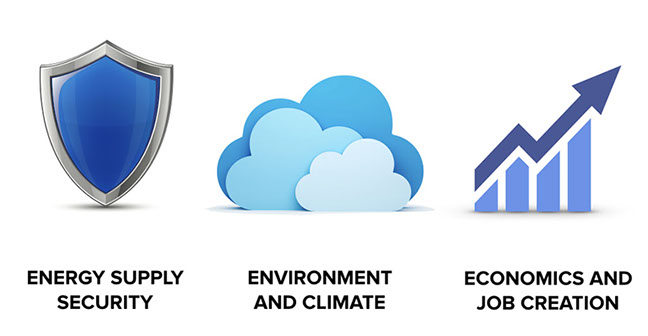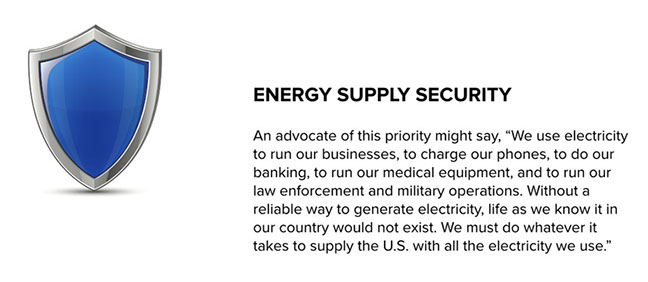SciGen Teacher Dashboard
Unit E3
Delivering Power to the People
Pedal Power
More About Power—Biking Uphill
Energy Transformations
Electricity Generation
Power Priorities
Conversation: Power Priorities
Duration: Approximately 60 minutes
Students graph data about New York City's electricity supply, then they debate related trade-offs. Students create graphs and manipulate data about the relative power capacity of actual power plants. They then apply facts about power plants to their everyday life and take a stand about which types of power plants they think should be built in the U.S. Students present their findings to the class and write persuasive essays.
LEARNING OBJECTIVE
Students apply their understanding of the concepts of electricity, work, and power to a real-world data set.
Teacher Tips
- Review the Reading to Learn in Science strategies, especially the Four Corners and Listening Triads to prepare for leading the discussion in your classroom.
Teacher Tune-ups
New York City at night NASA
Teaching Notes
ACTIVITY OVERVIEW
- Example: New York City's electricity generation (10 minutes)
- Three priorities related to electricity generation (15 minutes)
- Take a position (15 minutes)
- Group discussions (20 minutes)
Example: New York City's Electricity Generation (10 minutes)
:
Today we are going to use the case of a big American city, New York City, to learn about the different ways urban areas get electricity.
:
- From examining the pie chart, can you tell what is the biggest source for electricity generation for New York City?
- What percent of the electricity comes from thermal power plants?
:
- fossil fuels
- fossil fuels + nuclear
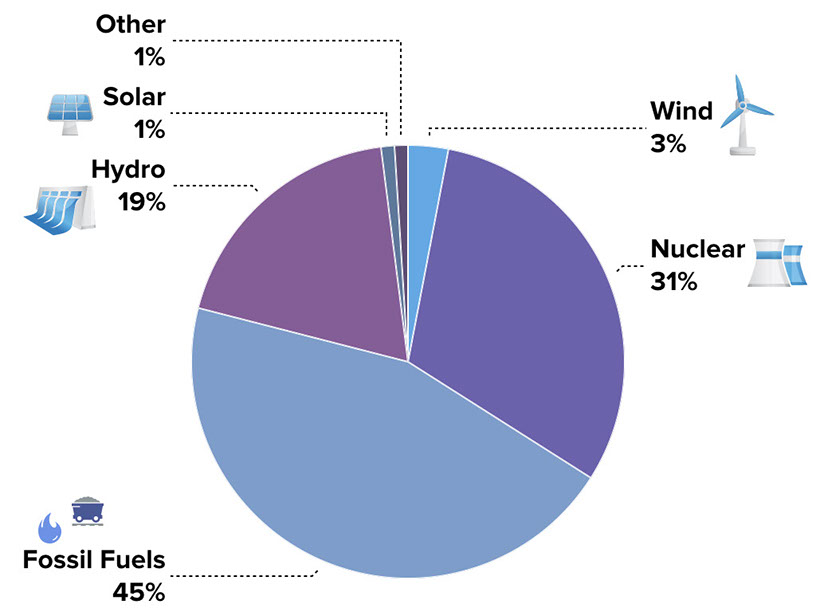
Three priorities related to electricity generation (15 minutes)
Display and discuss three important perspectives regarding energy policy.
:
The United States has had a difficult time developing a long-term energy policy because three different factors compete for top priority. Today you’ll be considering which you think should be the top priority.
Students are asked to consider three conflicting goals of America’s energy policy and to decide which of the three goals they support. Personalize each of the three goals to help students choose. Point out that security, environment, and job creation are real issues that Americans are considering every day when they try to decide which type of power plants to build. Review any terms that students may not understand.
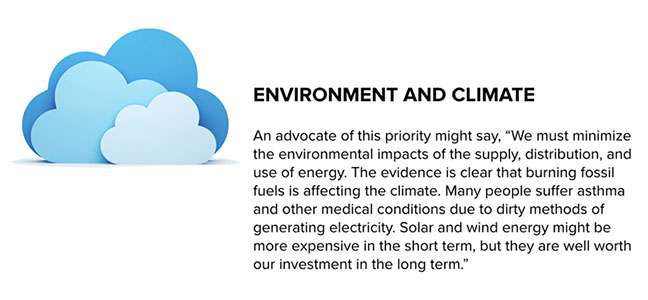

Take a position (15 minutes)

Group discussions (20 minutes)
First, group students with the same priorities to discuss why they feel the way they do. You can use a modified form of the Reading to Learn in Science Four Corners strategy.
Then, mix students of differing perspectives to respectfully listen to and challenge each other. You can use a modified form of the Reading to Learn in Science Listening Triads strategy.
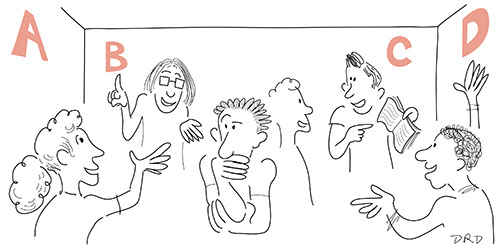
BETA Version - Please send comments and corrections to info@serpinstitute.org


